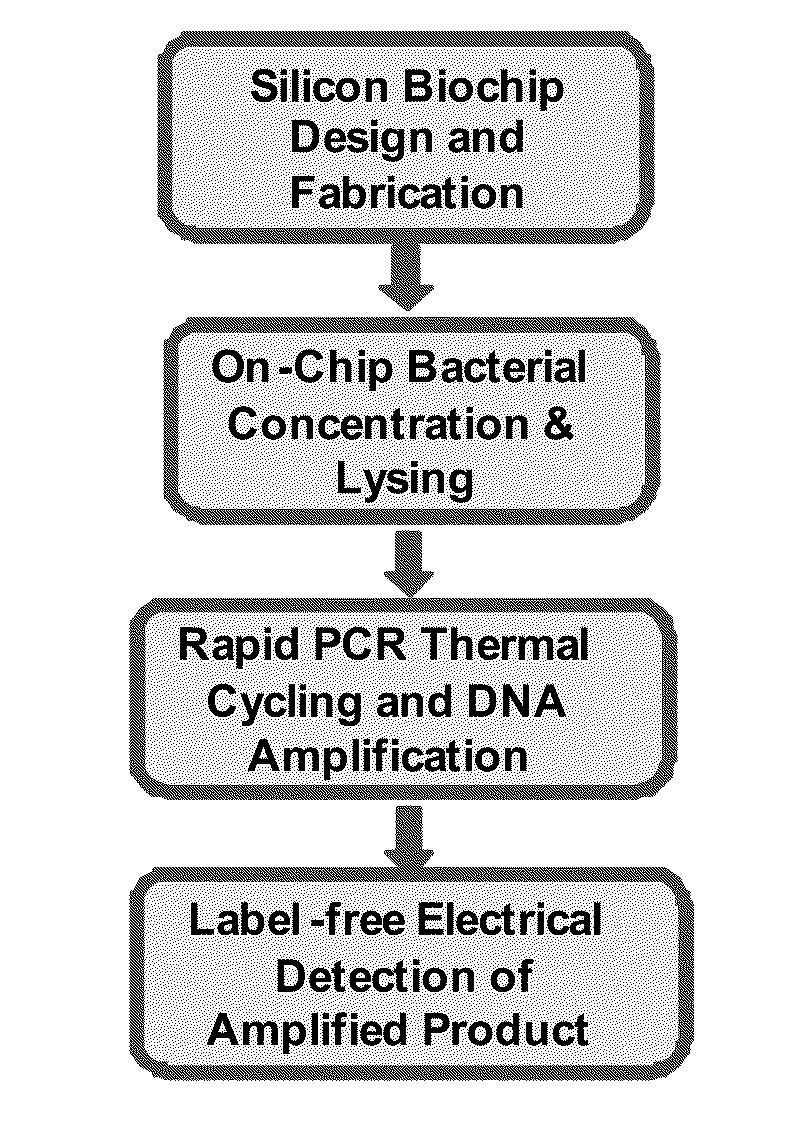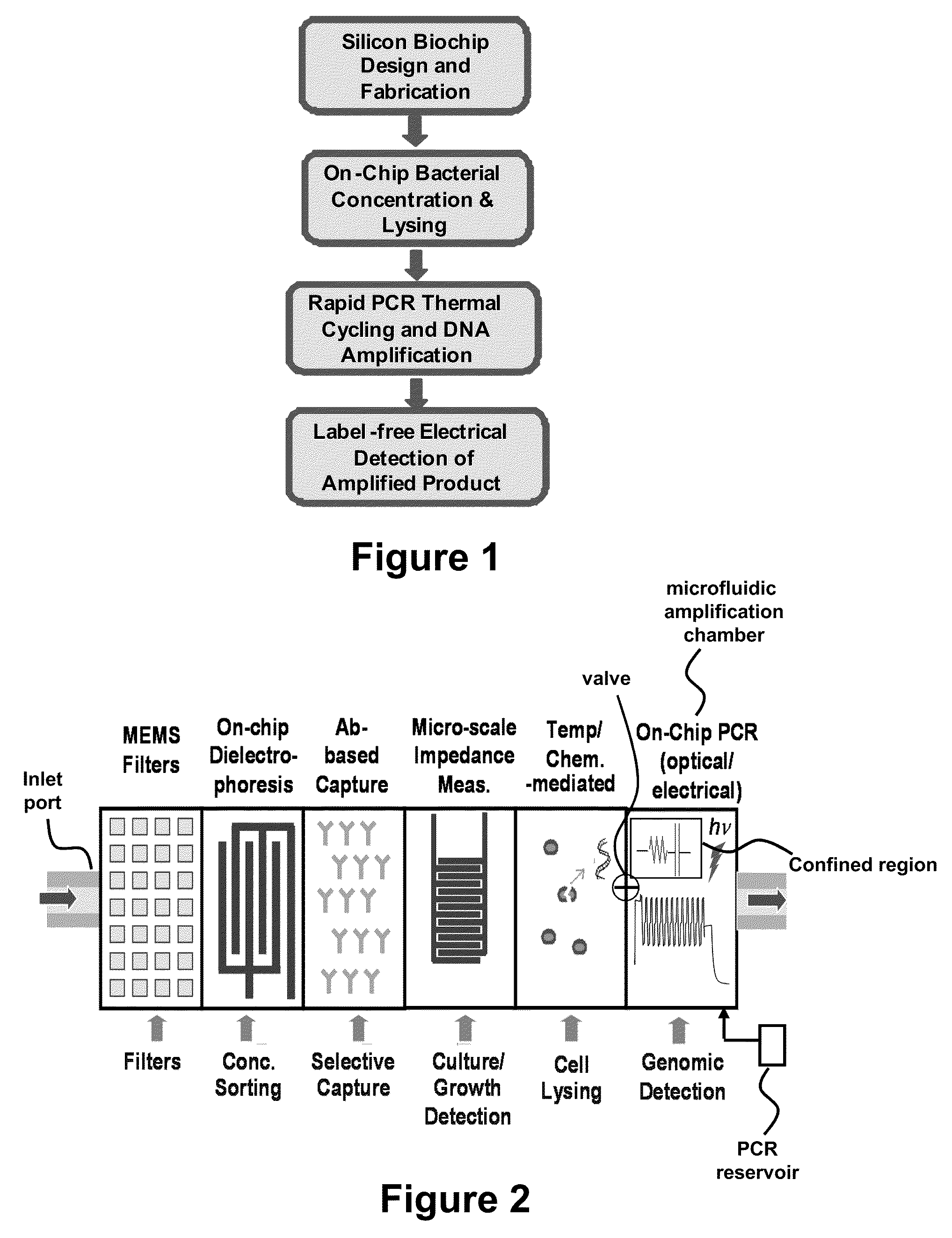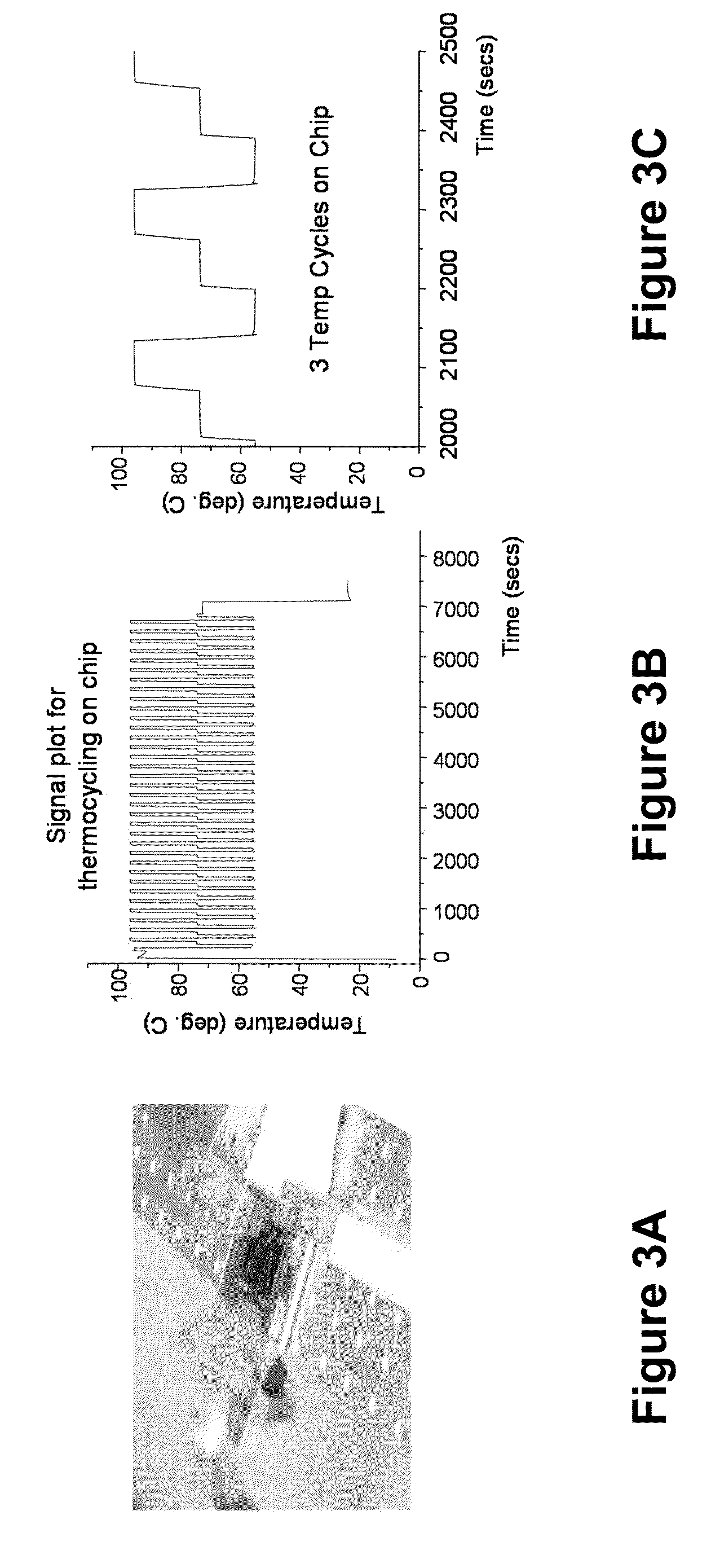Label Free Detection of Nucleic Acid Amplification
a nucleic acid amplification and label-free technology, applied in specific use bioreactors/fermenters, laboratory glassware, biomass after-treatment, etc., can solve the problems of inability to achieve significant increases in sensitivity and accuracy, and achieve the effects of improving detection and signal to noise ratio, increasing droplet stability, and increasing sensitivity and detection characteristics
- Summary
- Abstract
- Description
- Claims
- Application Information
AI Technical Summary
Benefits of technology
Problems solved by technology
Method used
Image
Examples
example 1
EXAMPLE 1
System and Process Design
[0095]Nucleic acid-based methods are still considered the gold-standard for detection and identification of microorganisms due to their high specificity and selectivity as compared to antibody-based assays. Two factors limit the wide-spread use of nucleic acid based detection methods in the low-resource settings and as point of care tests, namely, (i) the high cost of reagents and instrumentation for optical detection of the amplified PCR product, and (ii) the long time of PCR amplification. Presented herein are novel solutions to circumvent the above limitations by development of a single use biochip cartridge for the electrical detection of nucleic acids for identification of pathogens from a fluid sample (eventually from throat swab or sputum). Listeria monocytogenes and Mycobacterium avium (a BSL-2 model for Mycobacterium tuberculosis) are used to test the technology platform.
[0096]We focus on sample preparation, concentration, and electrical d...
example 2
EXAMPLE 2
[0102]Label Free Electrical Detection of Nucleic Acid Amplification: This example provides bacterial detection using micro-fluidic devices. Important aspects relevant in this technique includes microfluidics, bacterial detection on chip, including separation, concentration, growth and culture, growth media development, antibody-based capture, amplification by PCR, and electrical sensing. Each of these aspects are employed to develop integrated devices for electrical detection of PCR product, with bacteria as the target model system for the technology development described. The process and device, however, is compatible with any sample containing nucleic acid or portions thereof amenable to PCR. FIG. 2 illustrates an exemplary technology platform (e.g., an integrated biochip) underlying a rapid, on chip, point-of care assays. It is important to note that this is an exemplary embodiment only, and that the exemplified modules might not all be used for every application; the m...
example 3
EXAMPLE 3
Characterization of DNA Detection in Various Strength Buffers and PCR Solutions
[0154]We have demonstrated that the dielectric properties of a solution will be altered if there are DNA molecules present above a certain concentration [13]. By fitting the measured impedance versus frequency characteristics to an equivalent circuit model including the solution resistance and dielectric capacitance, the extraction of these parameters can be used to detect the presence of DNA molecules in the solution.
[0155]However, the chemical and physical processes in PCR are far more complicated than the case of DNA molecules in de-ionized water. Therefore, we first examine the effect of various DNA concentrations in different strength TE buffers (10 mM Tris-HCL, pH 7.5, 1 mM EDTA). By investigating the dielectric properties of DNA molecules in high ionic buffers, i.e. TE buffers, we gain further insights into the DNA dipole effects when these molecules are suspended in complex solutions. Ev...
PUM
| Property | Measurement | Unit |
|---|---|---|
| volume | aaaaa | aaaaa |
| volume | aaaaa | aaaaa |
| width | aaaaa | aaaaa |
Abstract
Description
Claims
Application Information
 Login to View More
Login to View More - R&D
- Intellectual Property
- Life Sciences
- Materials
- Tech Scout
- Unparalleled Data Quality
- Higher Quality Content
- 60% Fewer Hallucinations
Browse by: Latest US Patents, China's latest patents, Technical Efficacy Thesaurus, Application Domain, Technology Topic, Popular Technical Reports.
© 2025 PatSnap. All rights reserved.Legal|Privacy policy|Modern Slavery Act Transparency Statement|Sitemap|About US| Contact US: help@patsnap.com



